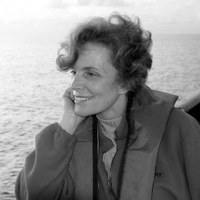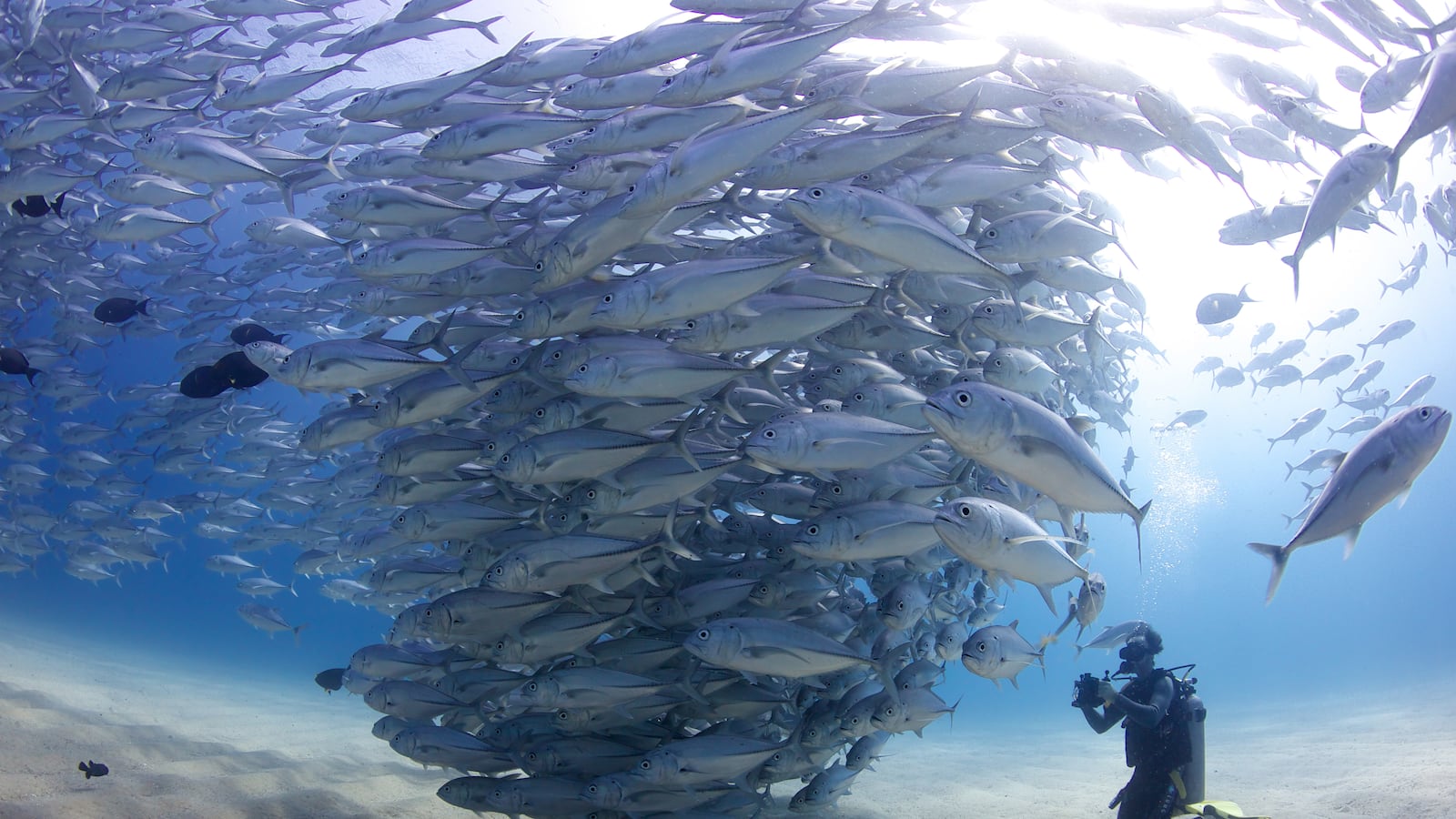In a presentation at the World Bank headquarters in 2009, I began by showing the classic image of Earth from space and commented: “There it is—The World Bank. Throughout the history of humankind, we have been drawing down the assets, living on the capital without accounting properly for the losses.”
We humans have this idea that the Earth—all of it: the oceans, the skies—are so vast and so resilient it doesn’t matter what we do to it. This is especially true of the ocean, where impacts are less obvious than for terrestrial systems. Current policies and mindsets around the globe were formed decades ago when it seemed the ocean was “too big to fail.”
But failing it is with about half the coral reefs, kelp forests, mangroves, sea grass meadows, and coastal marshes globally gone or in serious decline, hundreds of coastal dead zones, and steep reductions in numerous commercially-exploited species of shark, swordfish, tuna, cod, salmon, and many others. At the same time, the role of the ocean in governing climate, weather, oxygen production, the carbon cycle, water cycles, and overall planetary chemistry has come into clear focus. Now we know: If the ocean is in trouble, so are we. It is time to take care of the ocean as if our lives depend on it, because they do.
As an ocean scientist and explorer with thousands of hours on, around and especially under the sea, I have personally witnessed a time of unprecedented discovery—and unprecedented loss. For me, as a scientist, it all began in 1953 when I first tried scuba. It’s when I first got to know fish swimming in something other than lemon slices and butter. And in 1970, when I led a team of aquanauts living underwater for weeks at a time, I had the ability to stay in the sea and get to know individual fish and other creatures in ways that are not possible when you only have a few minutes to observe the action.
In the 50 years I’ve been exploring the world’s oceans, I’ve seen drastic changes. Many of the marine species we depend on for food and other products have been decimated—existing now at only about 10 percent of their previous levels. And as marine life has disappeared, commercial fishing operations have faltered or failed. Commercial fishing has caused significant damage to largely unknown ecosystems in the sea; depleted numerous species of fish, seabirds and marine mammals; and doomed many others to extinction. With the decimation of many coastal fish stocks worldwide, such as the Northeastern U.S. cod fishery, the fishing industry has moved on to the high seas—the 64 percent of the ocean that extends beyond national jurisdiction. Fishing operations target the seamounts, oceanic ridges and deep-ocean plateaus where ownership and responsibility do not lie with any nation.
The high seas are unique. Miles beneath the surface, in the absence of sunlight, animals derive energy from volcanic vents. Only in the high seas are there still some habitats free of invasive species. And only in the high seas do we find living organisms that are more than 8,000 years old, such as deep-sea corals. The living natural resources in the majority of the deep ocean have yet to be seen by human eyes.
Now we know. We also know that coral reefs, kelp forests, coastal marshes, numerous kinds of fish and other ocean wildlife have declined sharply owing to pressures we have applied. Dead zones have appeared. Oxygen-producing plankton is declining.
Most of the oxygen in the atmosphere is generated by the sea. The ocean drives climate and weather, stabilizes temperature, and shapes Earth’s chemistry. Water from the sea forms clouds that return to the land and the seas as rain, sleet, and snow, and provides home for about 97 percent of life in the world. With every drop of water you drink, every breath you take, you’re connected to the sea—no matter where on Earth you live. The poet Auden said, “Thousands have lived without love; none without water.” If you think the ocean isn’t important, imagine Earth without it. Mars comes to mind. No blue, no green. No ocean, no life-support system.
But there is good news: 10 percent of the big fish still remain; half the coral reefs are still in pretty good shape—a jeweled belt around the middle of the planet. There’s still time, but not a lot, to turn things around. There are still places in the sea as pristine as I knew as a child. The next 10 years may be the most important, and the next 10,000 years the best chance our species will have to protect what remains of the natural systems that give us life. Our oceans are at a tipping point, which means we still have a chance to tip things back in the right direction—if we act now.
One way of restoring oceans that has been employed successfully around the world is through the establishment of “marine protected areas”—designated zones of particular ecological importance in which endangered habitat and marine life are strictly regulated, much like national parks on land. This kind of approach—good for the environment, good for the economy, and good for the community—is key to successful environmental protection.
The race to restore health to the ocean is one we can’t afford to lose. We must seize this opportunity to educate and inspire action like never before. When I was honored with the TED Prize in 2009 and given the opportunity to make my lifelong wish—my “Mission Blue”—come true, I wished for you all to “use all means at your disposal—films! expeditions! the web! new submarines!—to create a campaign to ignite public support for a global network of marine protected areas, Hope Spots large enough to save and restore the blue heart of the planet.”
Over the past five years, we have traveled the globe exploring and advocating for the protection of Hope Spots, met with world leaders at major conferences and the United Nations, and named 50 new Hope Spots. Mission Blue, the Netflix documentary, will be released on Netflix and in theaters in New York and Los Angeles on Friday, August 15. Part action-adventure, part exposé of an eco-disaster, the film tells the story of over 100 scientists, philanthropists, and activists who gathered with me in the Galapagos Islands in 2010 to help fulfill Mission Blue and protect the natural systems that keep us alive.
There is time, but no time to waste. We are the only creatures with the ability to dive deep in the sea, fly high in the sky, send instant messages around the globe, reflect on the past, assess the present, and imagine the future. Each of us can make a difference. Our fate and the ocean’s are one.
Will you join Mission Blue?






